So many riders dream of crossing the Alps on the bike, and they’re right on the mark: doing the Transalp is a ticket to a week of unrivalled scenery, solitude, great food, and a ton of lung-busting, leg-burning climbs. Since the latter isn’t our main objective, we decided to undertake our Alpine crossing on our E-MTBs.
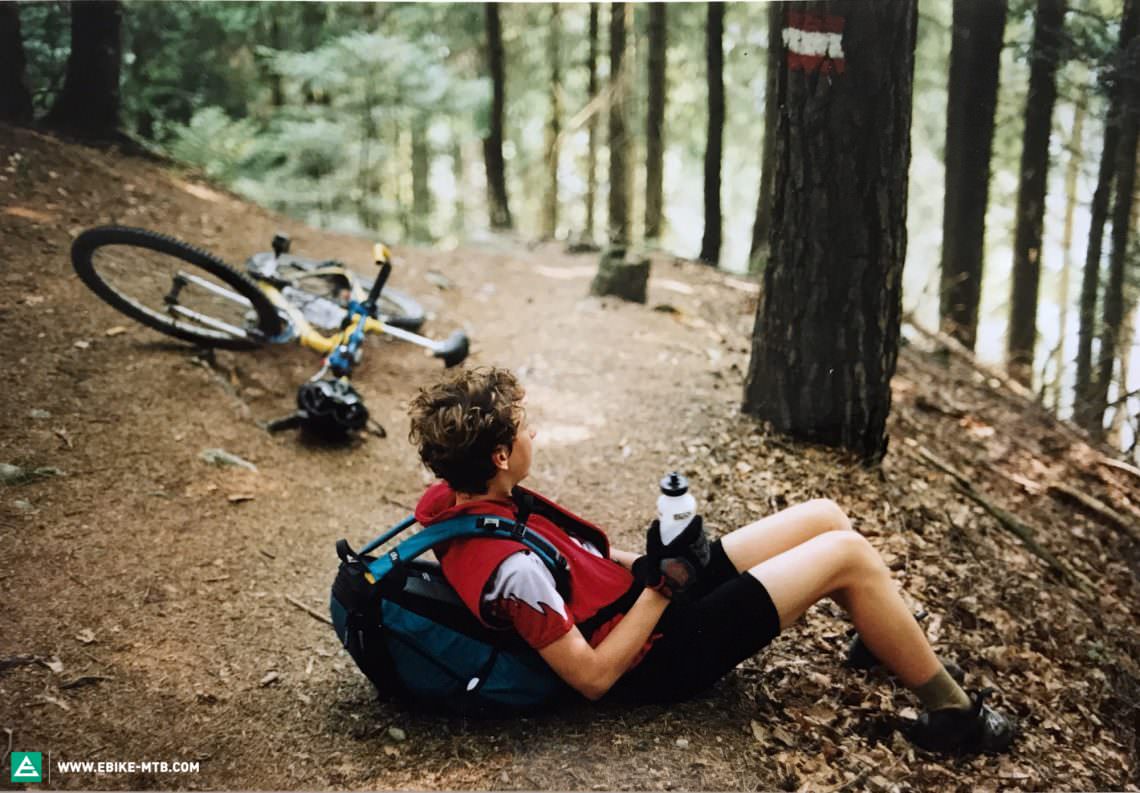

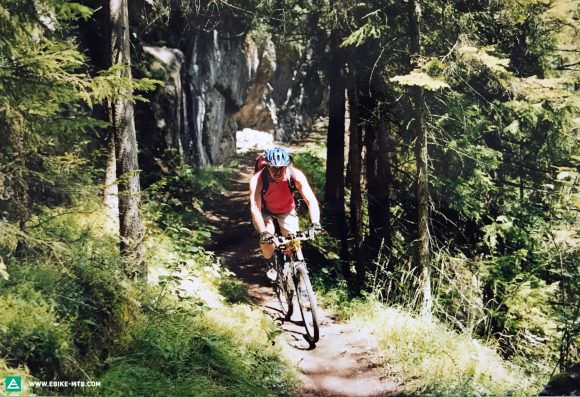
Sixteen years ago my eldest son Max and I embarked on our first Transalp. Back then, the world was fairly unrecognisable: GPS tracks, the Internet, and smartphones were a rare commodity. We spent a year planning our trip, trawling through copies of Germany’s biggest mountain biking magazine to dig out the correct routes and recommended specs for our bikes. We followed the advised stages to get from Germany’s Garmisch-Partenkirchen to Lake Garda, seeking out beds for the night as we arrived in each destination.
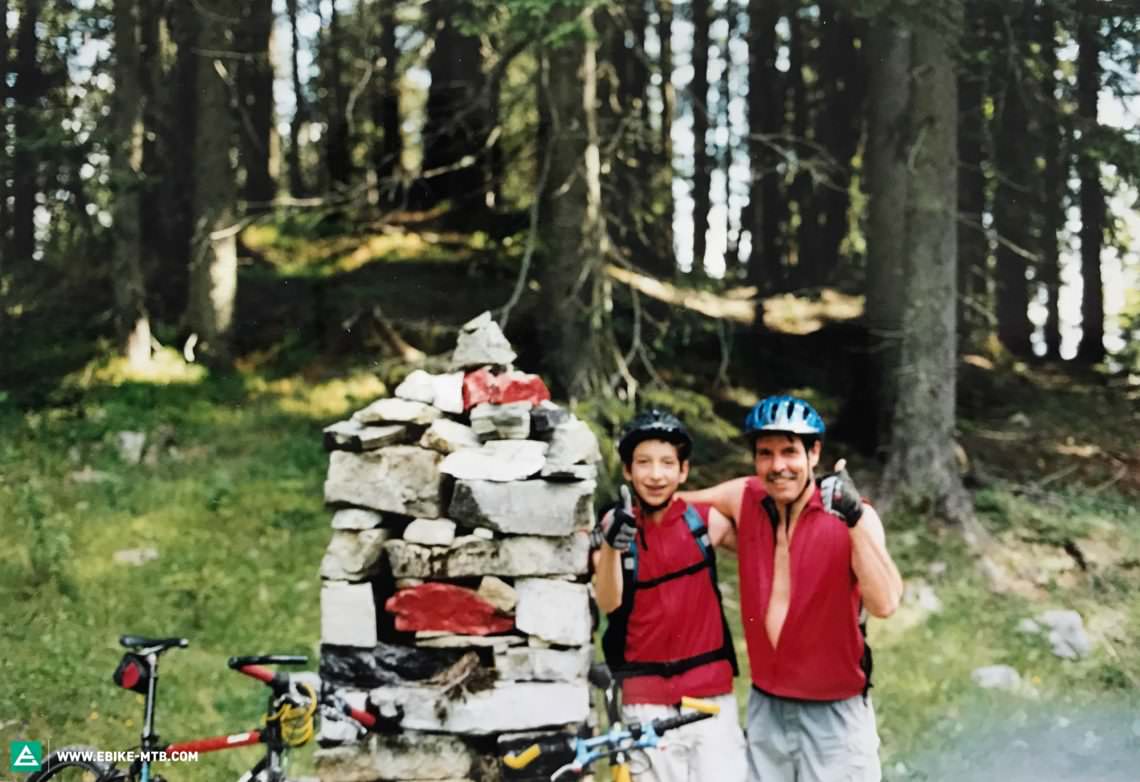
I was riding a hardtail with 40 mm of suspension, while Max (co-founder of this magazine) rode with a rigid fork. Our luggage was filled with multiple hiking maps and realms of route descriptions that we’d printed out eagerly. Over the previous year, we’d had an ongoing list of things to pack and we’d been trying to keep to the mantra of “Less is more.” Yet alongside this pedantic planning, there was also training to undertake; long rides with heavy backpacks in order to prepare our bodies. While it all sounded fairly strenuous, we reasoned that this is the sort of pre-Transalp preparation that’s vital if you want to traverse the Alps.

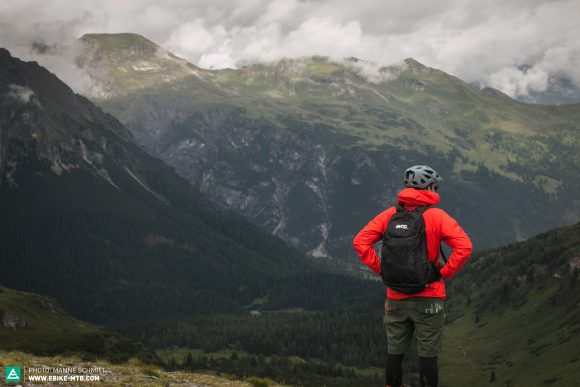
Now times have changed: E-MTBs have superb specs and such lust-worthy suspension that pro downhillers would have been frothing over them back in the day. Those powerful motors on bikes today can now take away the fear of even the steepest gradients. It all sounds pretty idyllic, doesn’t it?
Yet even a Transalp by E-MTB needs a certain amount of preparation. How are you going to split the route into stages? How far will each stage be? Will it be enough to charge your battery overnight, or do you need to bring a spare one? Can you even charge your bike overnight? Then there’s the question of your own fitness: are you ready for the long hours in the saddle?
I’d been well and truly caught by the Transalp virus after that first attempt, and as I still enjoy little more than exploring this phenomenal mountain landscape with my mountain bike, I made the snap decision to ride it on an E-MTB this time. However, this time around would be different – I opted for a stress-free version, calling on the expertise of a guide, a shuttle for my luggage, and transfers between points on the four-day route.
The mountains just aren’t as steep any more, and the endurance aspect isn’t as daunting.

Preparation is key – even with an E-MTB
Even riding an E-MTB across the Alps demands a certain amount of base fitness, and it wouldn’t take much to get my heart rate to shoot up on steep climbs – even in Turbo mode. Also, who wants to be the slowest in the group? Then there’s the endurance aspect; crossing the Alps demands a number of long, consecutive days in the saddle. It’s also good to have practiced your technical skills, such as how to climb the steep gradients by picking the right gearing and the right level of pedal-assist so that you can maintain traction on loose ground. For less experienced mountain bikers, the trickiest part of a Transalp tends to be the loose, rocky descents. Then again, with E-MTBs, don’t underestimate the value of possessing knowledge about the best cadence in order to benefit from the optimal pedal-assist, using your battery to craftily weasel out its maximum distance.


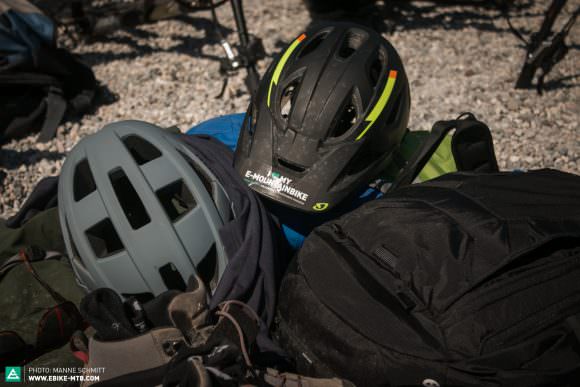
The route from Innsbruck to Lake Garda
Our ride departs from Natters in Innsbruck, although the real start was inside Wirtshaus Nattererboden when we tuck into the restaurant’s speciality pasta Kasspatzl’n and introduce ourselves to the group. It quickly transpires that only the guide Picco and me have any notable E-MTB experience. The rest of the Transalpers are by no means new to cycling, but motorised bikes are a new venture for them. Consequently, we spend a while getting them acquainted with the E-MTBs and thus don’t set off until 4pm – a time that’s usually reserved for pulling up at the day’s destination after a day in the saddle. We still had 34 km and 1,350 metres of climbing ahead of us, beginning with a climb into the Stubaital and past the Maria Waldrast monastery before heading into the Wipptal. Picco uses the first part of the route to explain the ins-and-outs of the E-MTBs to the fresh-faced newbies – the E-MTB effect was in full flow, with wide eyes lighting up and broad grins spreading across faces. By dinnertime in Trins, our first port-of-call, it is clear that the second day will be a great laugh.
The next morning rolls around with our new ritual: a briefing from Picco, laying out the day’s stage and poring over the relief map. We then set off over the Nösslach into the Obernbergtal. From the Sattelberg to the Brenner border ridge there’s usually a section where you have to carry your bike, but fortunately it’s all rideable with an E-MTB, although it transpired that long cranks and limited riding skills would take their toll here. You ride along a former military road, lined with World War II bunkers along the border ridge, enjoying breathtaking views over the mountain peaks in every direction. There’s a brief moment of satisfaction before the rain starts to haul it down. Rain jackets donned, we duck onto the trail heading down towards Gossensass, the finish for the day, and the trickiest, most technical section we’d face on day two.

The third day takes us back onto tarmac and gravel tracks up to Sonnenplateau Ritten, where there’s a view over the Dolomites that’d induce envy from any recipient of a postcard from here. The descent into Etschtal is tough on the brakes, which get pretty vocal and there’s a faint whiff of burning so we’re forced to stop every so often. As the route takes us further south, there’s a noticeable rise in the mercury. By the time we roll in Bolzano, it’s a full 20°C warmer than the previous day. Naturally, this is something to celebrate so after a quick turnaround at the Hotel Girlaner Hof, we grab our swimming stuff and pedal over to the sun-heated Montiggler Lake. This ushered in a relaxing part of the trip, followed by my favourite sort of ride back down to the hotel on gently sloping, super-flowy trails.
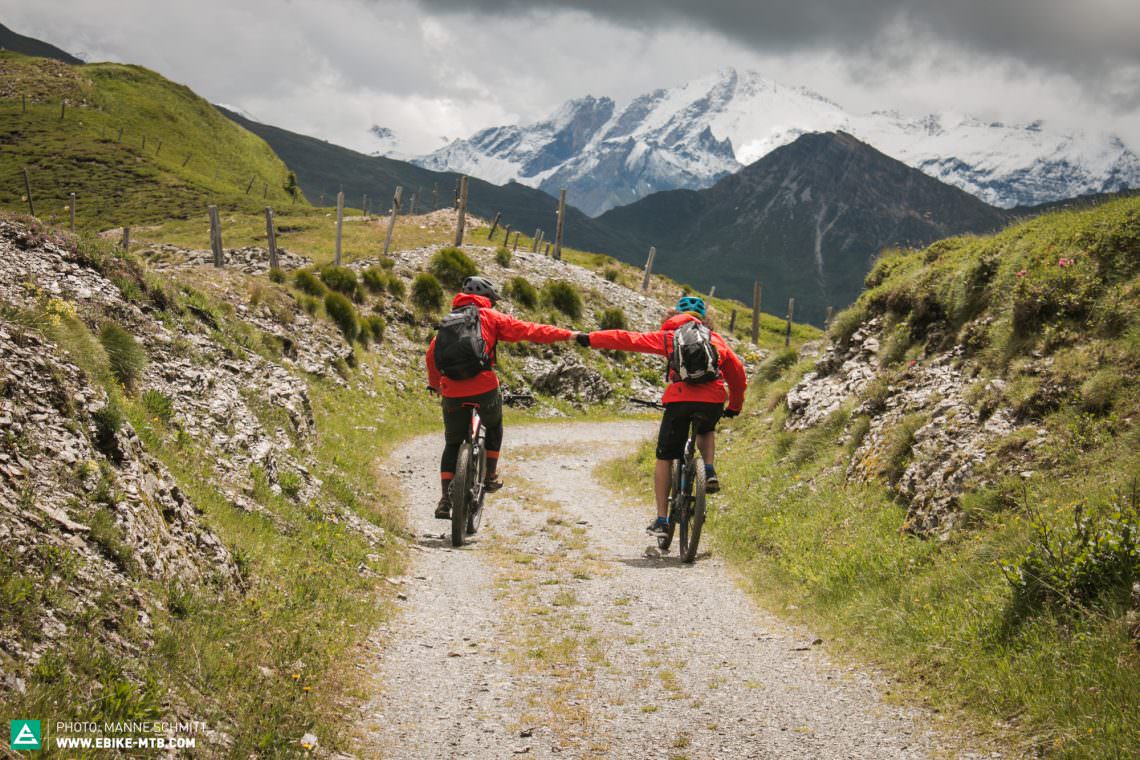

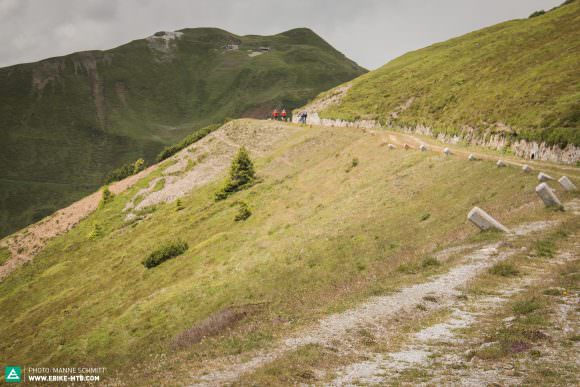
The final day has a really steep climb up to Andalo, the high Paganella plateau, before dropping down to the Molveno Lake at the foot of the Brenta Dolomites. About 30 km before the riding El Doraldo of Lake Garda we encounter the final, big climb and overtake some mountain bikers who’ve been forced to push their bikes while we ride by – this really hammered home the benefits of an E-MTB for me. Loose terrain on steep gradients, when the sun is beating down and it doesn’t even dip below 30°C in the shade, is tough at any time… but it’s far more relaxing and enjoyable on an E-MTB. While it’s irrefutable that riding across the Alps is gruelling, there’s a different priority while on an E-MTB, and fun is firmly at the forefront. After another climb there is a long descent to the glistening, sun-drenched Toblino Lake in the Sarcatal before we cruise along to Lake Garda, the much yearned-after destination for any Transalper. The beers are already chilling when we get off our bikes.

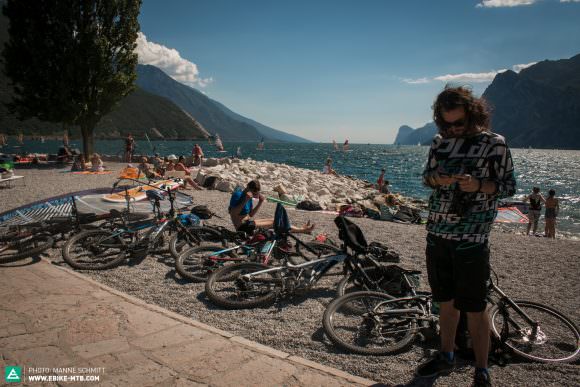

Adventuring with zero suspension versus a comfort-led ride on an E-MTB: whatever the style, the satisfaction and emotion of crossing the Alps is just as amazing.


After four days: the résumé
It couldn’t have been more unlike my first traverse of the Alps. By choosing a guided Transalp with an E-MTB, I’d stumbled across a worry-free package that saw a thorough pre-ride check of my bike, repairs on route when needed, and a refreshing lack of concern on my behalf with regards to navigating. Lunch stops and overnight accommodation were equally as well organised, which went hand-in-hand with the competence of the guide and the comfort of shedding your luggage and letting it be shuttled between the hotels. This luxury means you can get away with only carrying the essentials, plus a spare battery or charger and clothing for when bad weather hits.
This sort of Transalp is certainly suited to mountain bikers who may not be at their peak fitness, but still thrive off that passion for conquering a crossing of the Alps. With an E-MTB, the focus shifts more towards enjoyment, and you’ve got more freedom to indulge in the landscape – you definitely aren’t as exhausted when you tumble into bed, so you can make the most of each stage destination too. If you’re put off by the thought of a guided trip, we’d recommend checking out the Albrecht route for E-MTBers, which is crammed with suggestions and tips when it comes to charging-your-battery logistics.

Tips for potential Transalpers
Bike
A full-suspension bike with 140 – 160 mm of suspension, 200 mm disc brake rotors, and a dropper post will provide the most confidence-inspiring setup and the most fun while descending. Don’t underestimate your favourite, most trusted saddle – you’ll appreciate the familiarity. Flat pedals make trail riding a bit safer, and it’s nice to shake off the worry if you do crash that your cleats might not unclip soon enough. Find out before riding whether you’ll need a spare battery or whether you’ll get the opportunity to recharge at lunchtime.
Bike-Check
A thorough bike check needs to happen with ample time before heading off on the ride in case anything needs repairing or replacing. E-MTBs can get away with a few minor niggles, but it’s definitely wise to arrive at the start of your Transalp in prime condition. Are the brake pads still decent? How’s the drivetrain and chain? Is it shifting well through all the gears? Do your tires still have sufficient tread? Has your suspension been tuned to deal with the extra weight of your backpack? Even on a guided tour, you should always carry a few items: a multi-tool, spare parts like a chain or at least a chain tool, brake pads, and tubes plus puncture repair kit.
What backpack?
You’ll probably want a 20- to 25-liter riding backpack (preferably with a back protector and rain cover) that can securely hold a spare battery or charger. It should also be able to hold poor-weather riding kit like a spare jersey, rain jacket, etc, plus a water bottle, your spare parts, energy bars, and the like. If there’s no luggage transport, you’ll have to invest some time into planning how you carry your kit.
The checklist
To make sure you pack all the important stuff, we’ve gathered the essentials in an easily printable checklist. Enter your name and email below and we’ll send it to you for free!
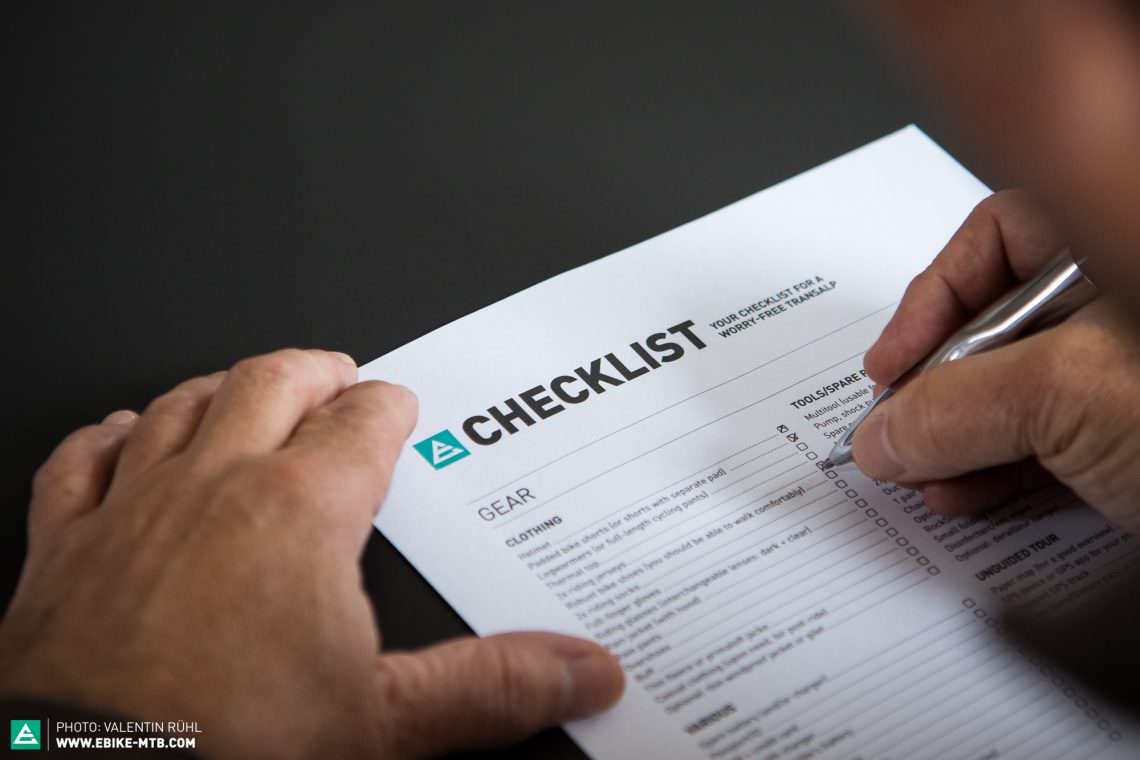
Guided Alpine bike rides: asi-reisen.de
Trail.Trans.Alp (with Lift, Gondola, Shuttle) (mit Lift, Gondel, Shuttle): ridehappy.de
Did you enjoy this article? If so, we would be stoked if you decide to support us with a monthly contribution. By becoming a supporter of E-MOUNTAINBIKE, you will help secure a sustainable future for high-quality cycling journalism. Click here to learn more.
Words & Photos: Manne Schmitt









